News Archive
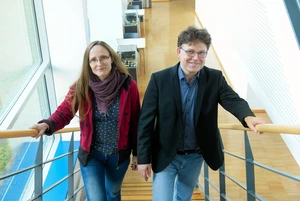
Excellent bridge builders between basic research and research focused on application
Joint labs of FBH and HU are turning Adlershof into a hub for quantum research:
Small particles, large effects. This is the name of the game for researchers at Ferdinand-Braun-Institut. Together with Humboldt-Universität zu Berlin (HU), four joint labs are now building bridges between basic…
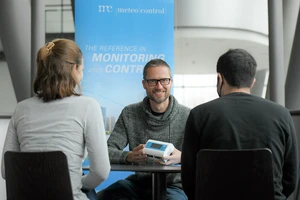
Steering 50.000 photovoltaics systems
A new arrival in Adlershof: The innovation for digital power plants created by meteocontrol are in high demand worldwide:
Weather changes, and so do energy yields made from sun, wind or water. Ensuring a reliable supply requires flexible systems that are capable of pooling, storing, and releasing electricity from multiple sources. As a…
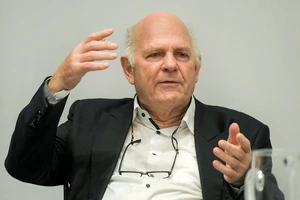
A driving force
30 years of IGAFA, the Joint Initiative of Non-University Affiliated Research Institutes in Adlershof e.V.:
A name that says it all: The Joint Initiative of Non-University Affiliated Research Institutes in Adlershof e.V. (IGAFA) was a driving force behind establishing Adlershof as a location for high technology. It…
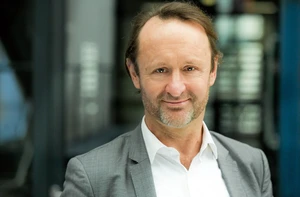
A push for new materials
The Leibniz-Institute for Crystal Growth (IKZ) is expanding its capacities to bring new materials to application faster—for example, in charging stations for electric vehicles:
Assembly lines in the automotive industry stand still for weeks, components for household appliances are not available, and the delivery of new smartphones is delayed. The global chip crisis shows in many areas. Due…
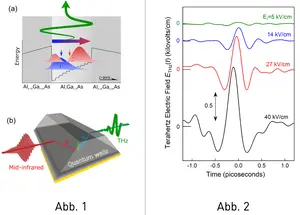
Intense monocycle terahertz pulses from shifting electrons in quantum structures
Scientists from MBI and PDI demonstrated a novel concept for generating ultrashort THz waveforms by tailoring electronic currents in a compact optically driven quantum device:
A time-dependent electric current emits an electromagnetic wave, a basic physical effect exploited in telecom antennas. Transferring this mechanism to the ultrashort length and time scales of the quantum world allows…

The Adlershof–Lusatia Future Corridor
The future of work is being developed along transport axes that reach far into Brandenburg:
High cost of living, congested streets, and the home-working trend: These are but three of the factors that have helped along an idea in Adlershof that could soon catch on elsewhere. Its name: Innovation corridors.…
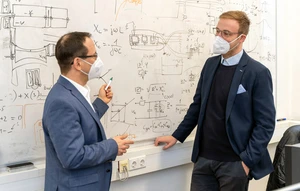
A future made of light
“iCampus Cottbus”, a project supporting structural economic change in Lusatia, will create many advantages for Adlershof:
The region was once the pacemaker of East Germany: There was a time when 200 million tons of coal were produced in Lusatia. A livelihood for about 100,000 people. Coal mining will be coming to an end in Lusatia by…

Strategies against stress in work and traffic
Interview with Ralf Blank, project manager at the Adlershof Health Network:
Countless workers commute day by day. We asked Ralf Blank, project manager at the Adlershof Health Network, what that means for the Technology Park—a place where 22,000 people work and rising—and how the insights…

A Wiki for Perovskite Solar Cell Research
An international team of experts has designed an open source database to systematically record findings on perovskite semiconductors:
An international team of experts has collected data on metal halide perovskite solar cells from more than 15,000 publications and developed a database with visualisation options and analysis tools. The database is…
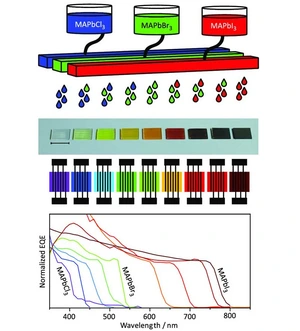
Printing an electronic rainbow
Combination of colour printing and chemical tunability enables printed spectrometer:
Researchers from Innovation Lab HySPRINT at Helmholtz-Zentrum Berlin (HZB) and IRIS Adlershof of Humboldt-Universität zu Berlin (HU) have used an advanced inkjet printing technique to produce a large range of…
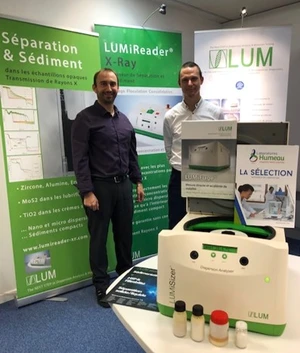
Improved analytics in the food and beverage industry
LUM GmbH enters into a sales partnership with the French company LABORATOIRES HUMEAU:
In November 2021, LUM GmbH started a sales partnership with the French company LABORATOIRES HUMEAU in order to be able to offer customers in the food and beverage industry and the corresponding research institutions…

Learn from nature, use resources more effectively and avoid harmful effects
5 trendsetters nominated for the LUM Science Award YSA 2022:
From January 24th to 25th, 2022, LUM GmbH will host the 10th International Conference for Dispersion Analysis and Materials Testing. Prof. Dr. Dr. Lerche, chairman of the scientific committee and LUM managing…
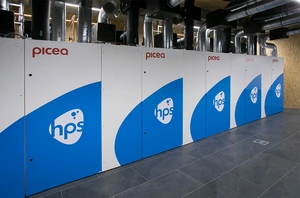
HPS expands its product range by introducing storage systems for businesses and multi-family houses
Year-round multi-picea electricity storage system can store up to 15,000 kilowatt hours of solar electricity:
HPS Home Power Solutions GmbH (HPS), provider of picea, the green hydrogen-based, year-round electricity storage system for buildings, today announced that it has expanded its product portfolio. The newly developed…
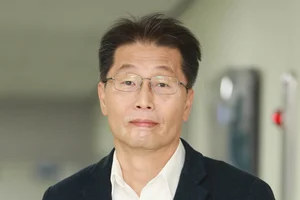
Kookrin Char wins Humboldt Research Award hosted by IKZ
The scientist is one of the leading pioneers in the field of oxide electronics:
The Alexander von Humboldt Foundation honours the collaboration of Kookrin Char with IKZ and the Leibniz ScienceCampus GraFOx in the field of oxide semiconductors by a prestigious Humboldt Research Award. The…
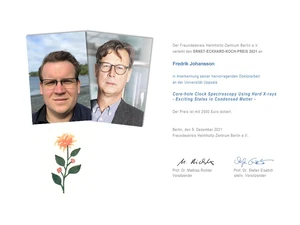
Ernst Eckhard Koch Prize and Innovation Award on Synchrotron Radiation
Friends of HZB awarded outstanding researchers at this year‘s HZB User Meeting, which was attended by around 450 visitors:
This year, the Friends of HZB awarded the Ernst Eckhard Koch Prize to the outstanding doctoral thesis of Dr Fredrik Johansson (Institut des NanoSciences de Paris, CNRS, Sorbonne). The European Innovation Award on…
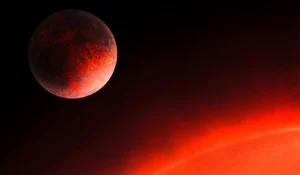
Ultra-light and super-fast extrasolar planet discovered
An international team of scientists led by the DLR Institute of Planetary Research is characterising the newly discovered extrasolar planet GJ 367 b:
As far as extrasolar planets go, 'GJ 367 b' is a featherweight. With half the mass of Earth, the newly discovered planet is one of the lightest among the nearly 5000 exoplanets known today. It takes the extrasolar…
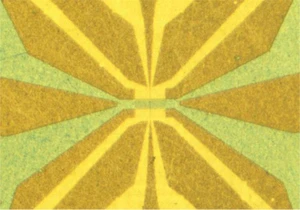
Green information technologies: Superconductivity meets Spintronics
An international team has designed a material system suitable for low-power consumption superconducting spintronic-applications:
Superconducting coupling between two regions separated by a one micron wide ferromagnetic compound has been proved by an international team. This macroscopic quantum effect, known as Josephson effect, generates an…

New funding programme to support start-ups in the field of materials sciences
IRIS Adlershof and INAM will receive EUR 1.1 million to set up the incubator “AdMaLab — The Berlin Materials and Hardware Lab”:
The State of Berlin is providing the Innovation Network for Advanced Materials (INAM e.V.) and its cooperation partners, such as IRIS Adlershof of Humboldt-Universität zu Berlin, around 1.1 million EUR to set up an…
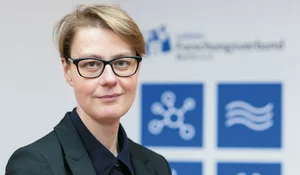
Forschungsverbund Berlin with new Managing Director
Dr. Nicole Münnich takes on the role of Managing Director on December 1, 2021:
Dr. Nicole Münnich takes on the role of Managing Director of the Forschungsverbund Berlin e.V. (FVB) on December 1, 2021. She succeeds Dr. Falk Fabich, who was Acting Managing Director from April 2021 following the…
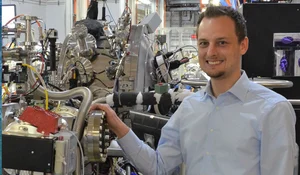
Walter-Schottky-Award for Felix Büttner
Award for his outstanding work in solid state research:
The Walter Schottky Prize honours outstanding work by young physicists in solid-state research. For 2022, the award goes to HZB physicist Dr Felix Büttner for his groundbreaking achievements in the field of magnetic…